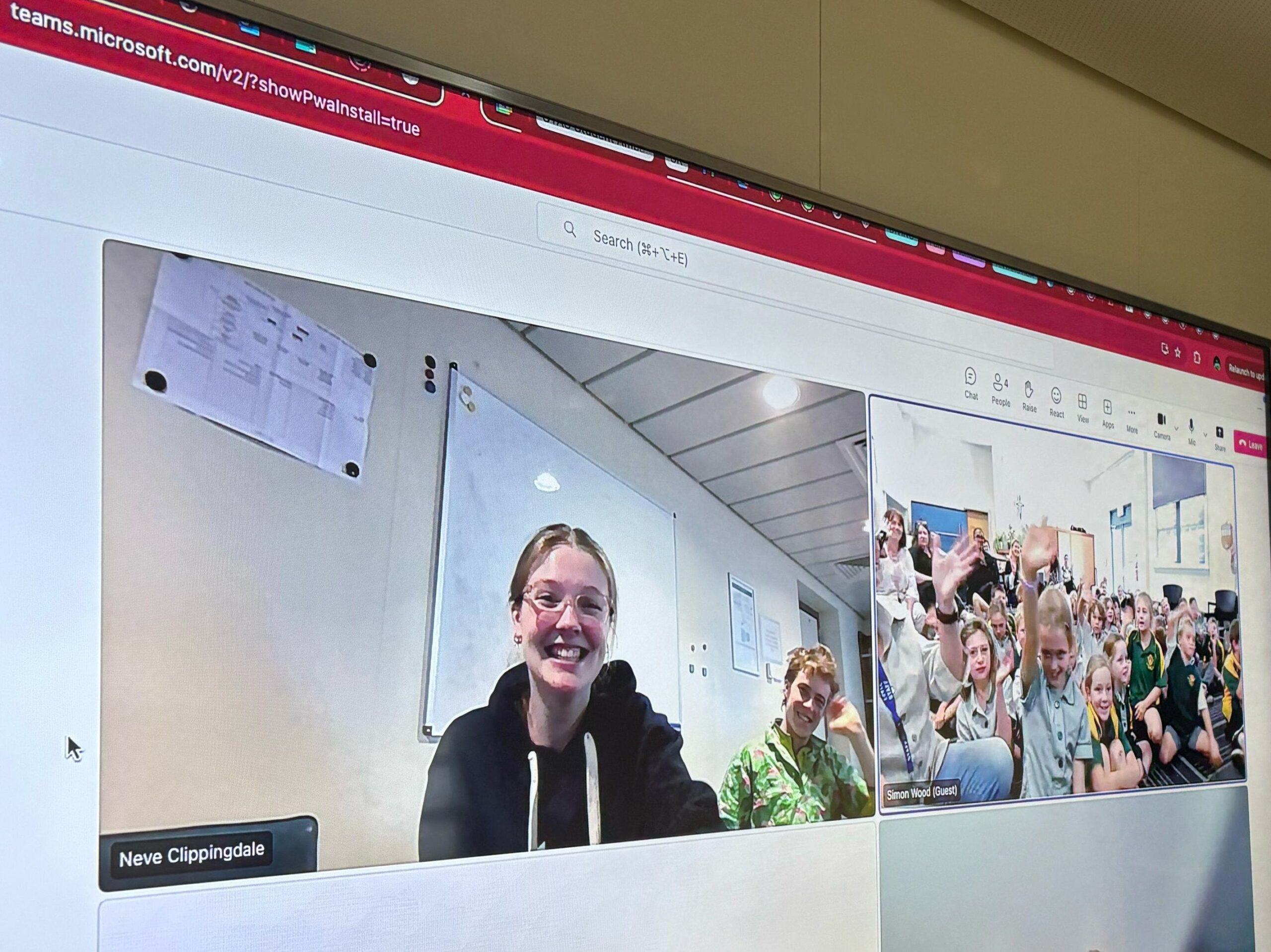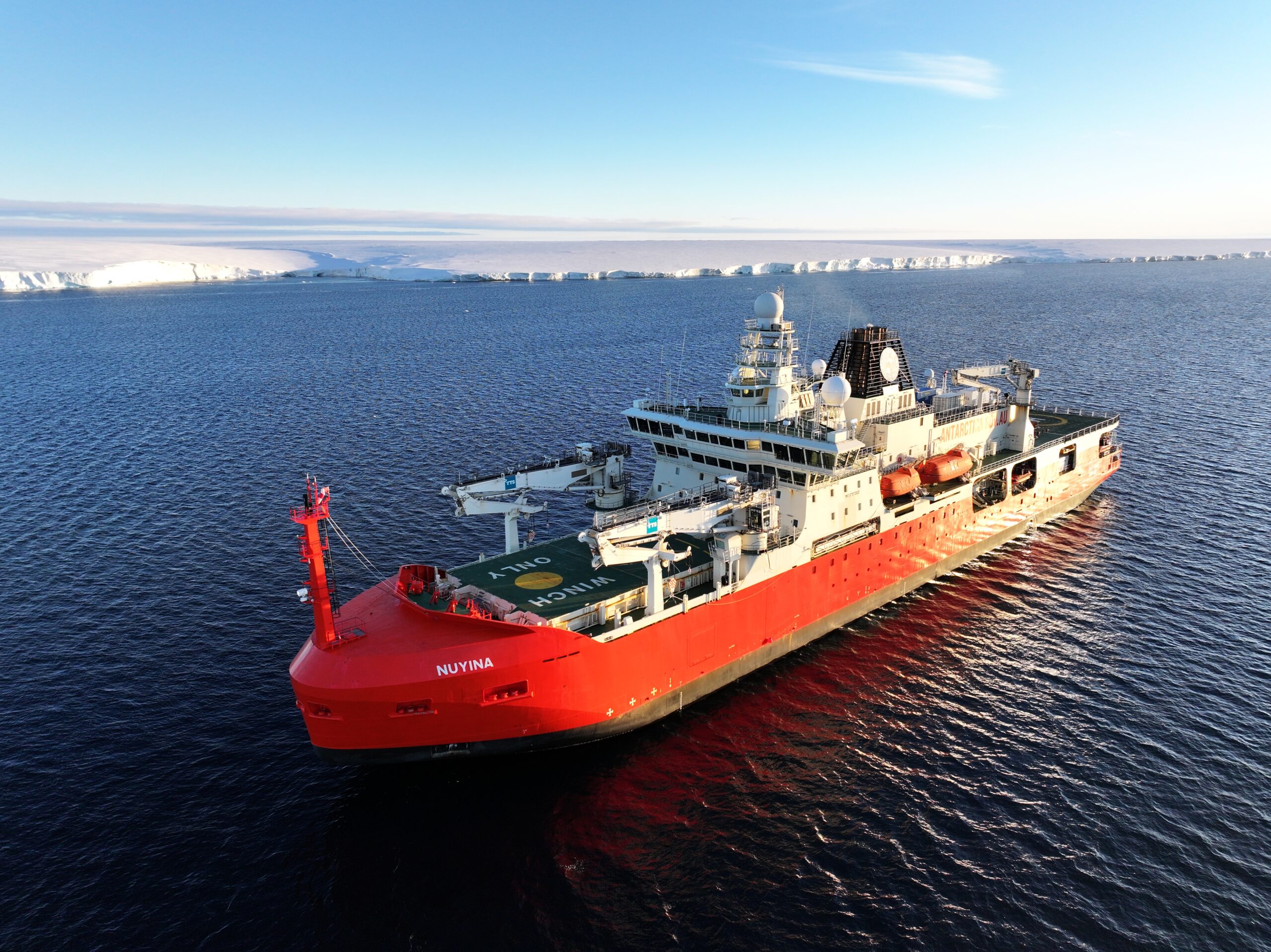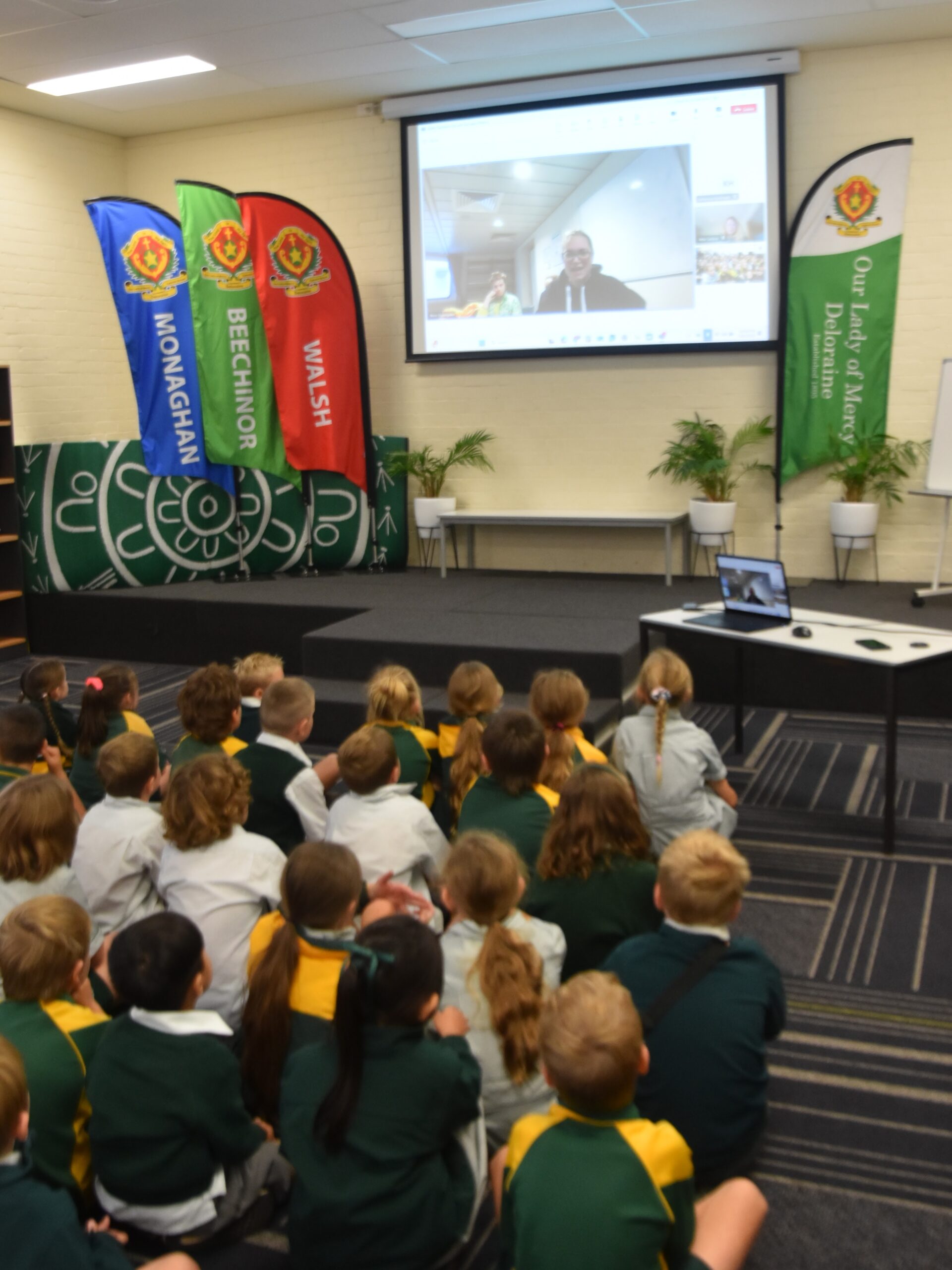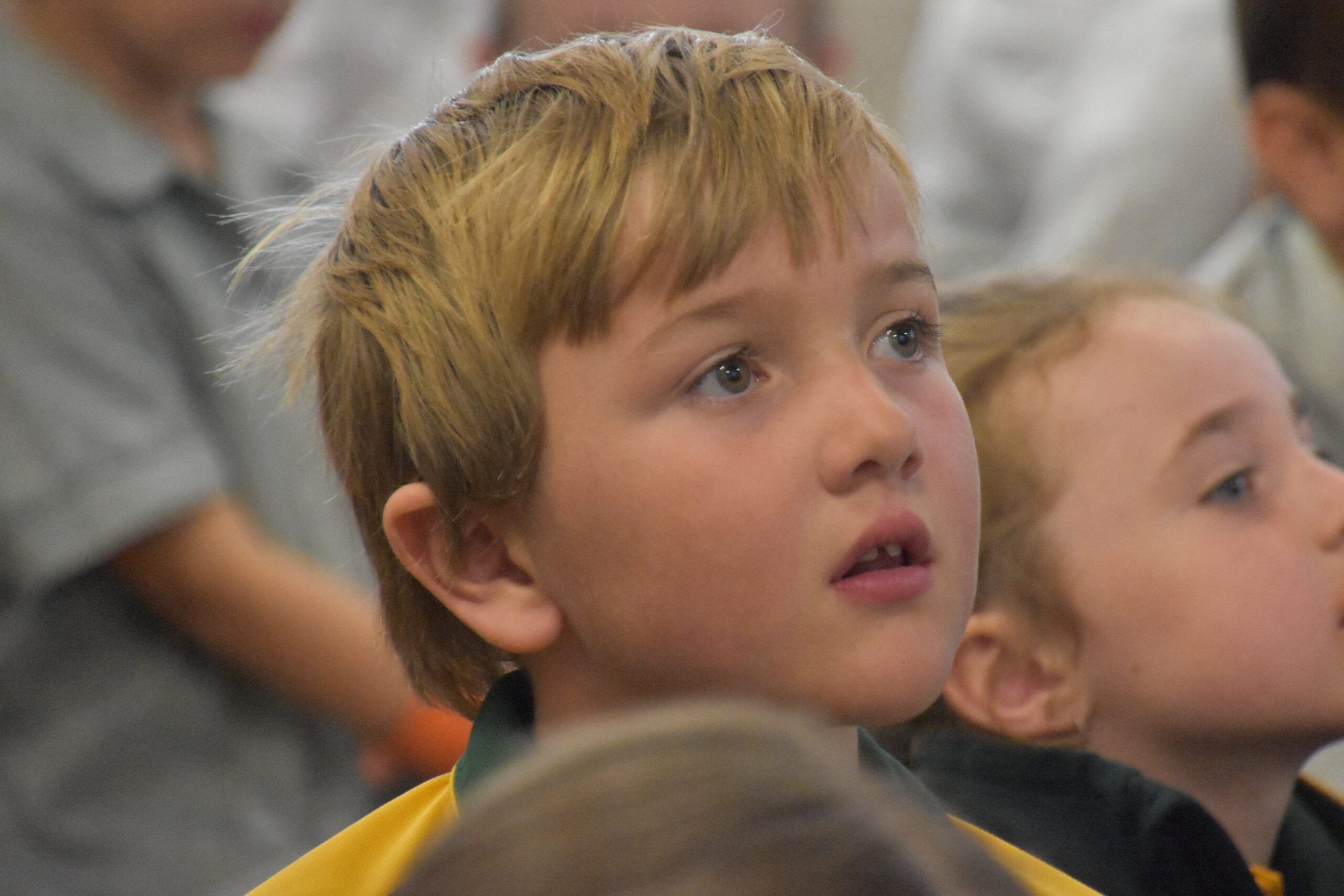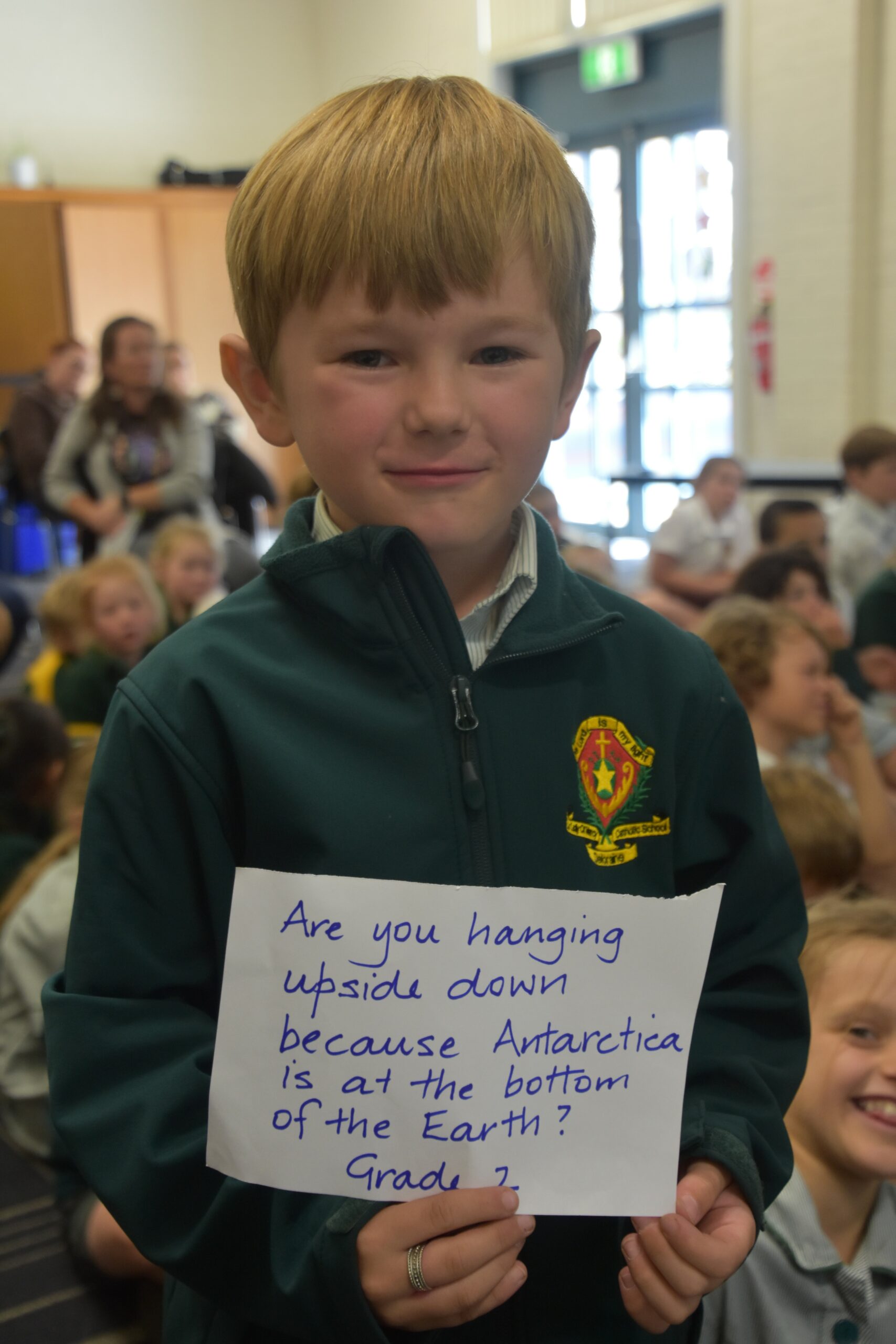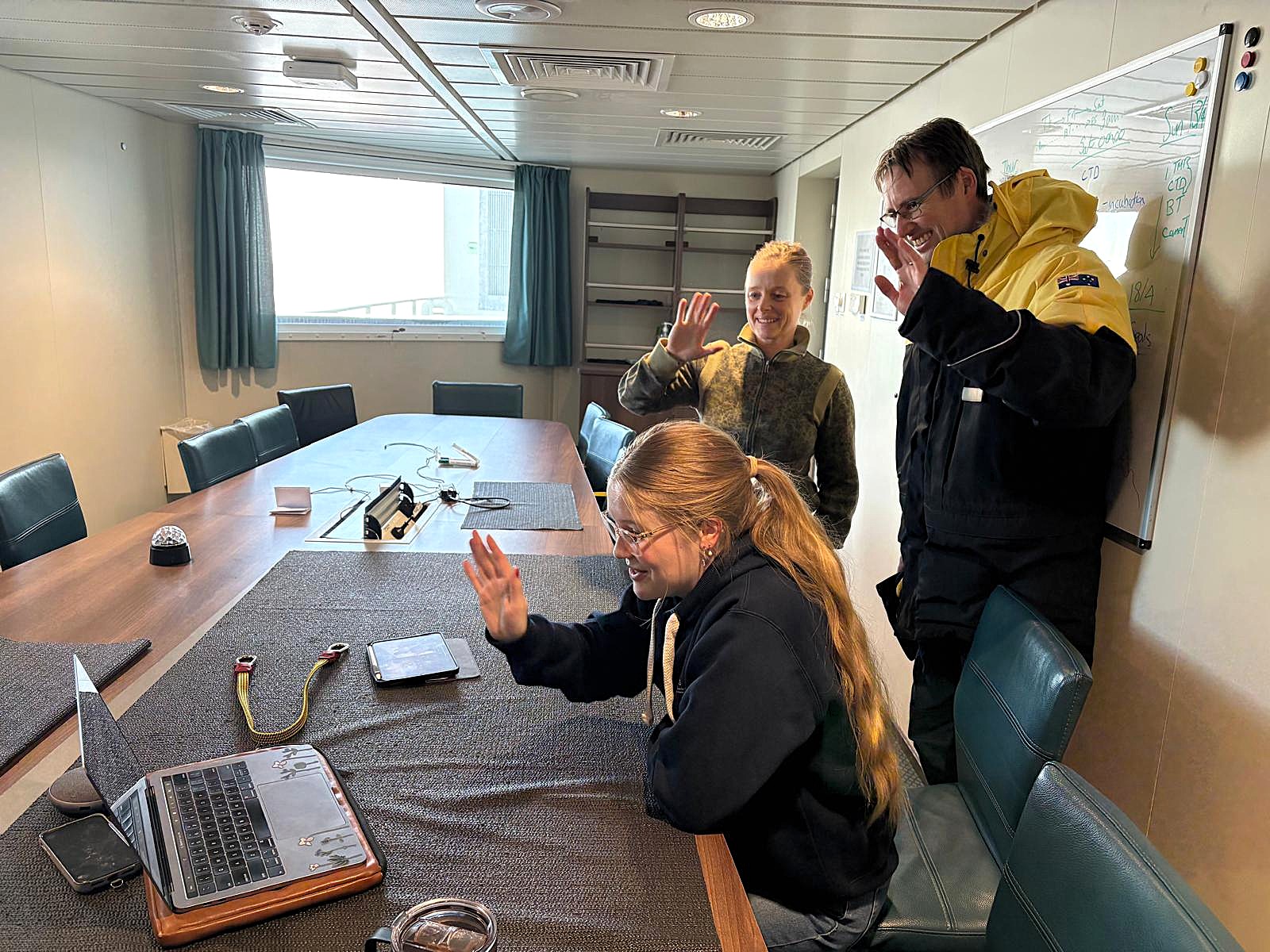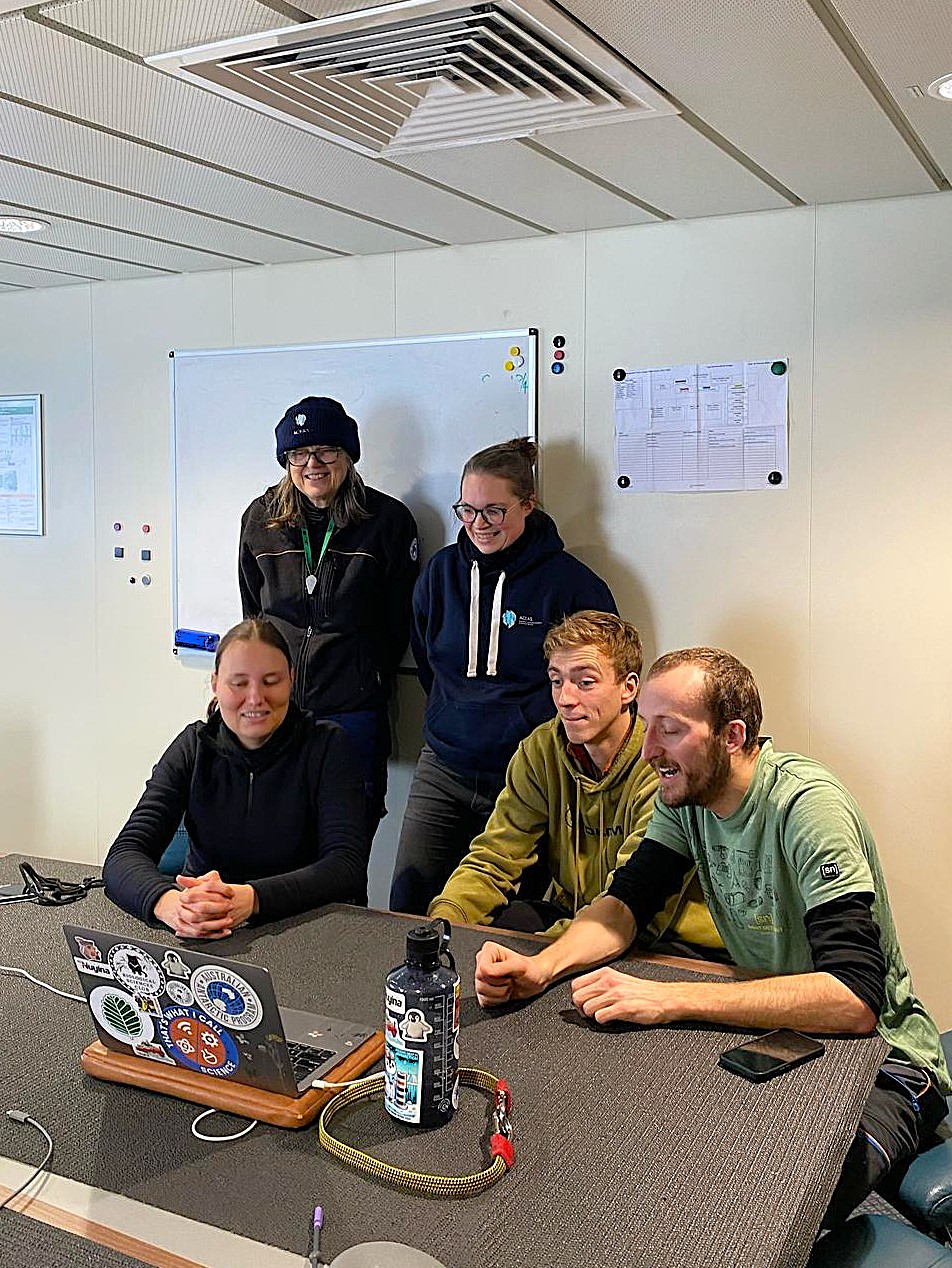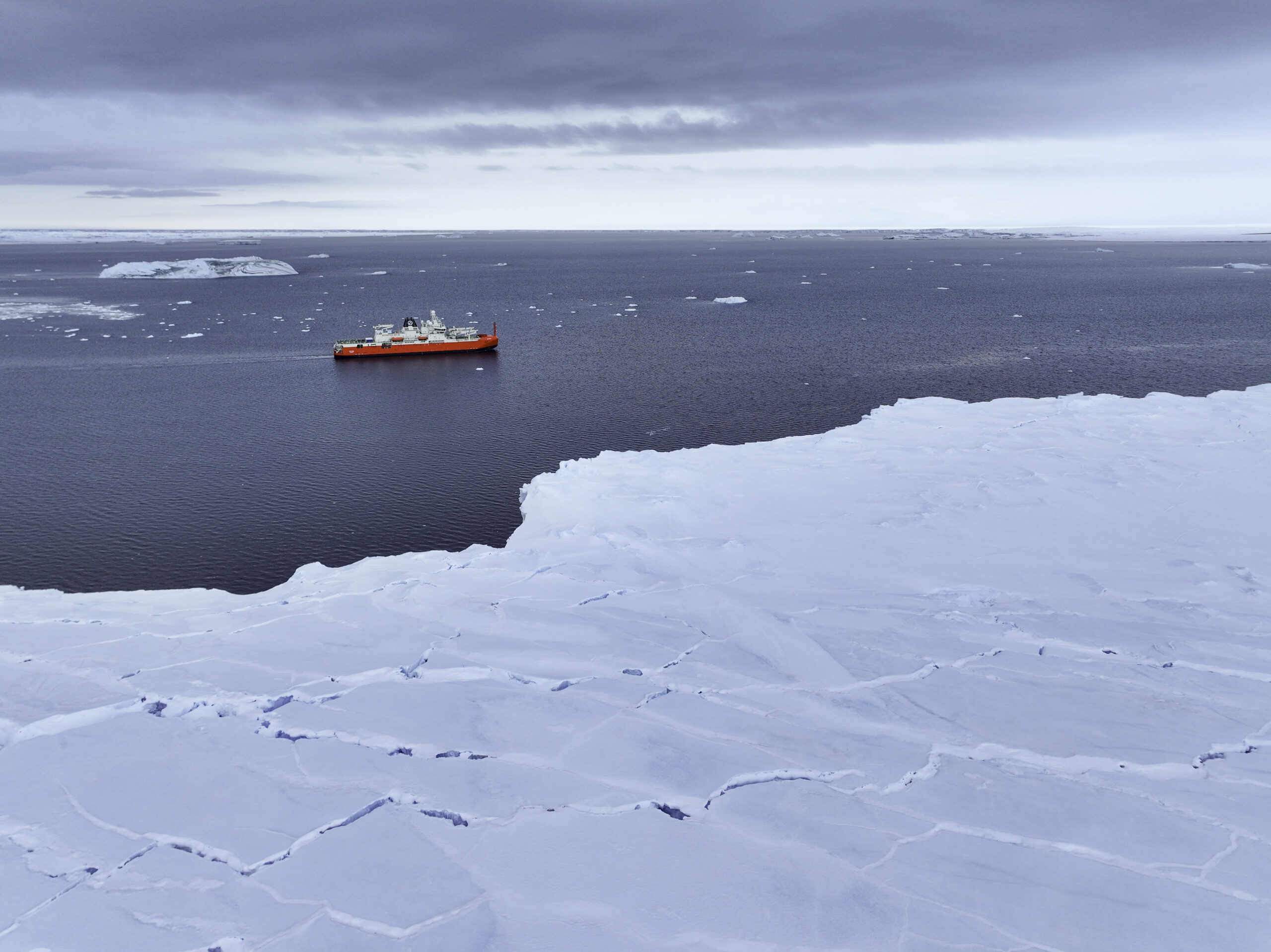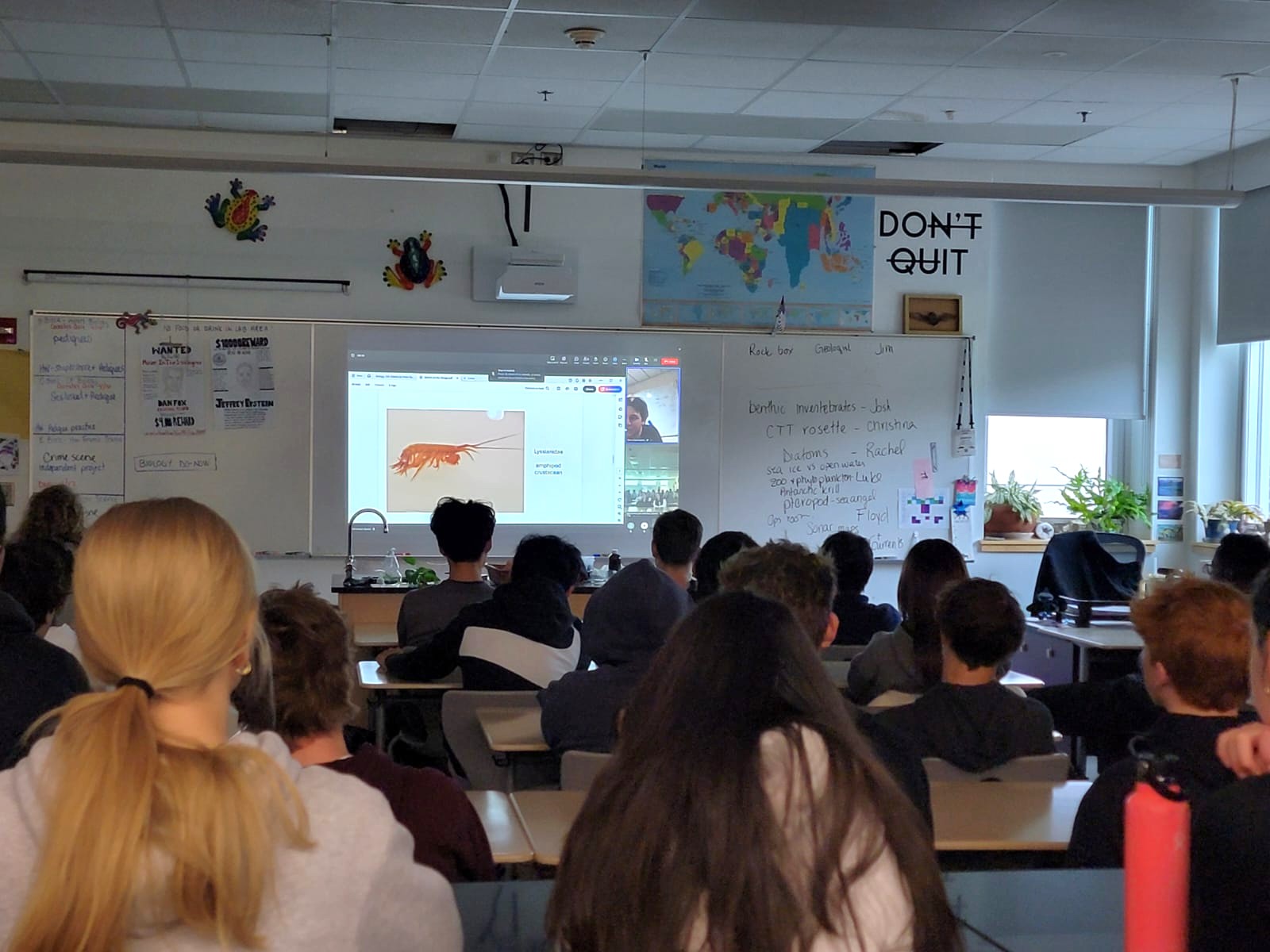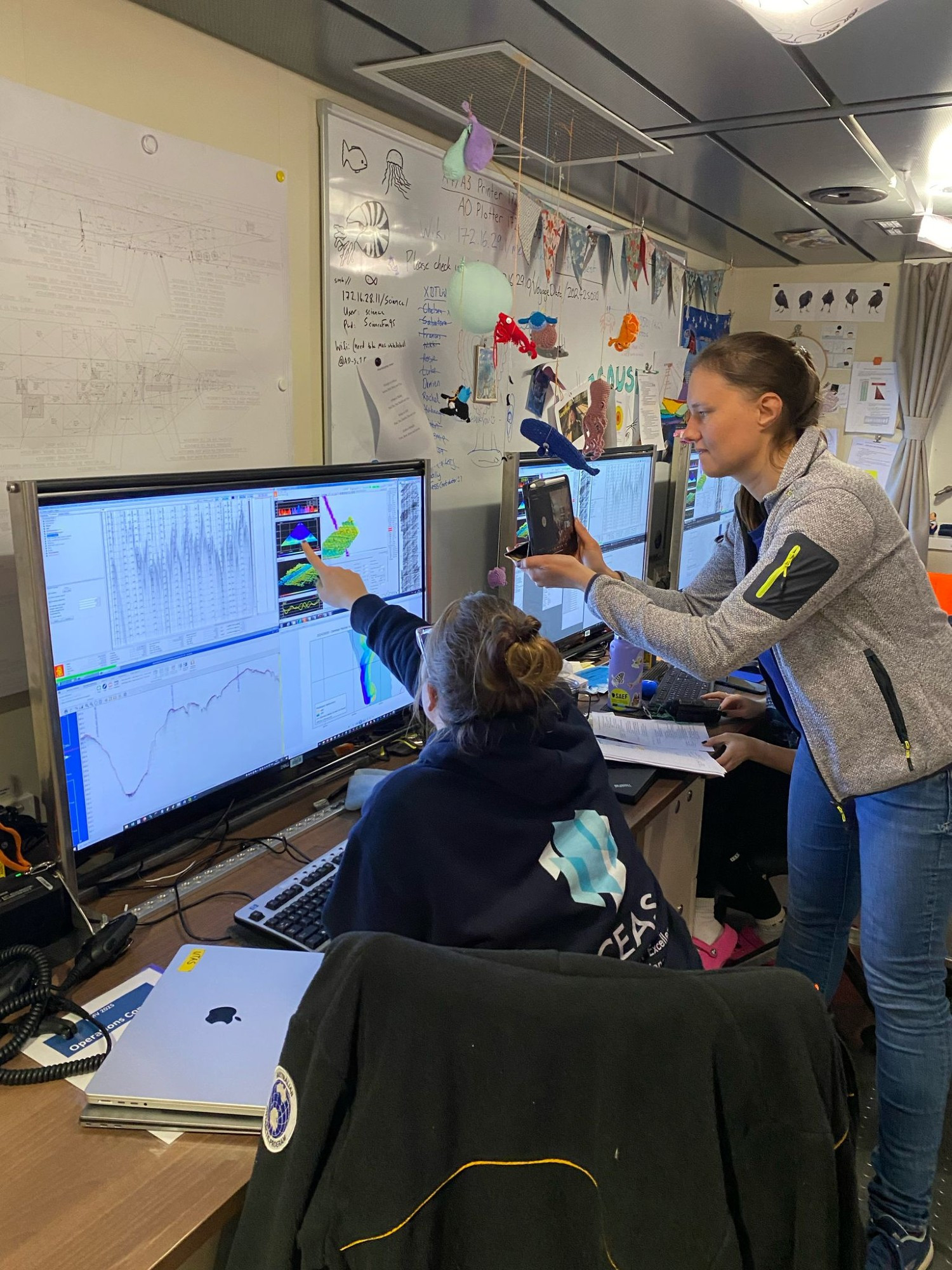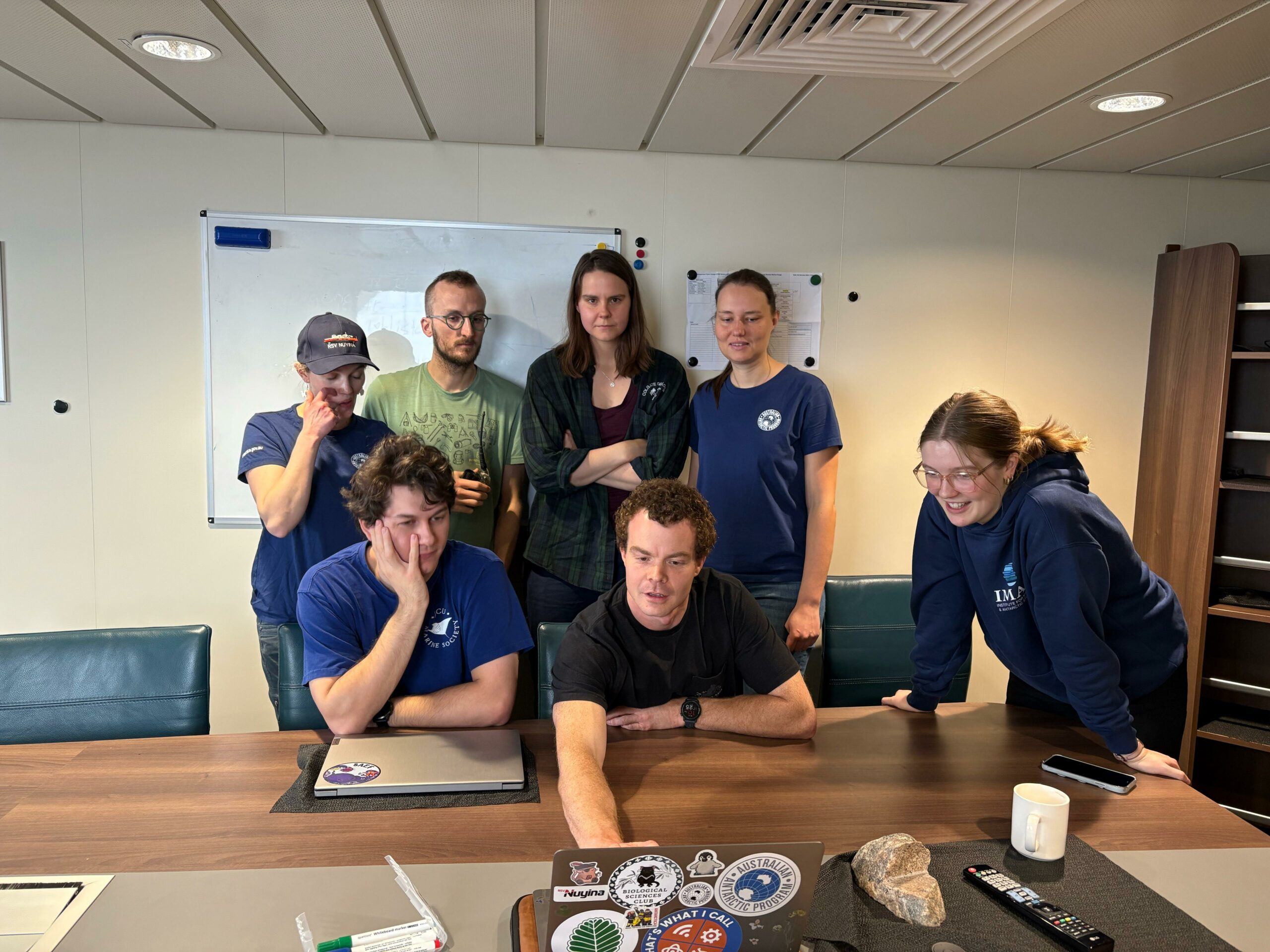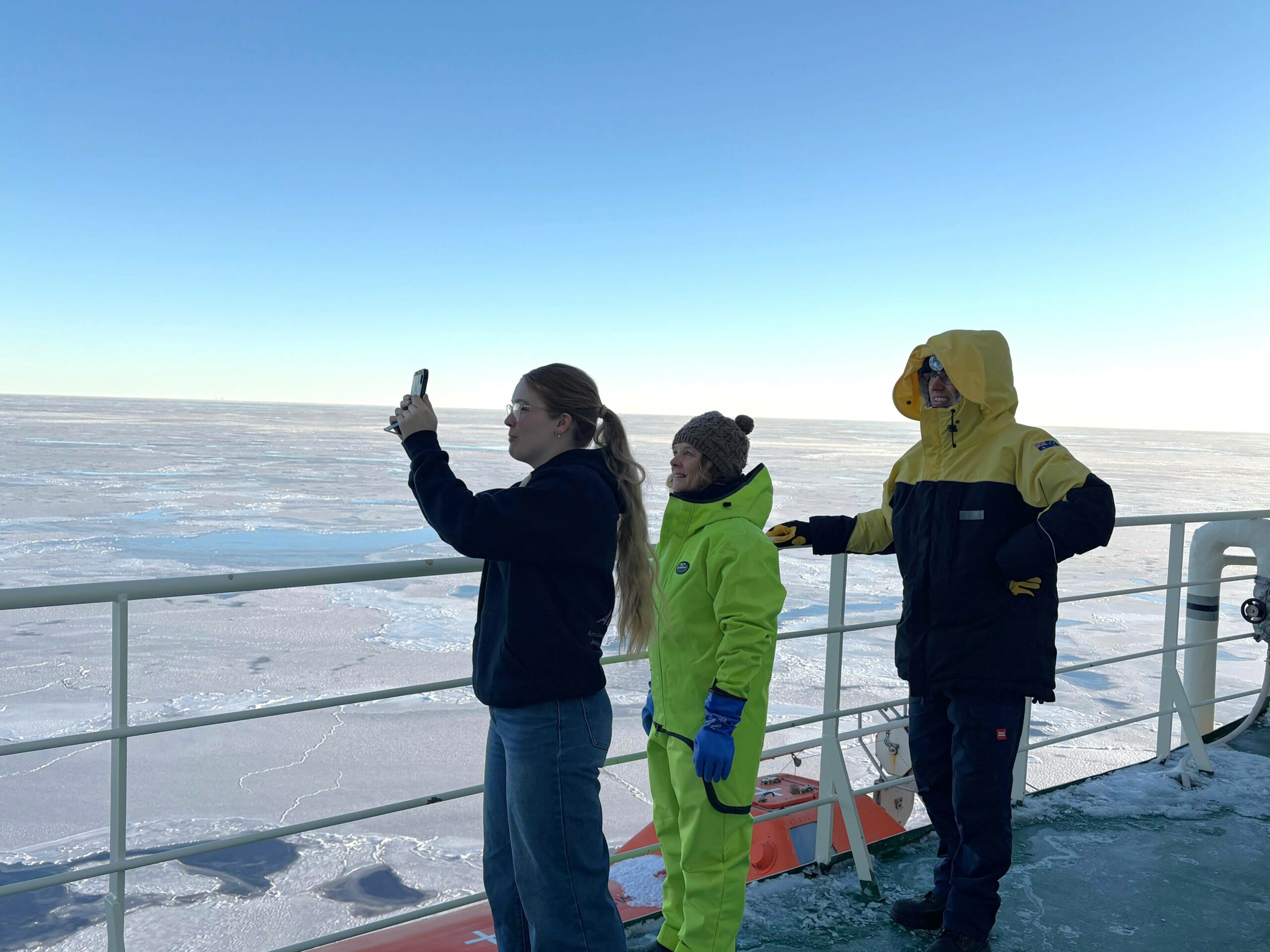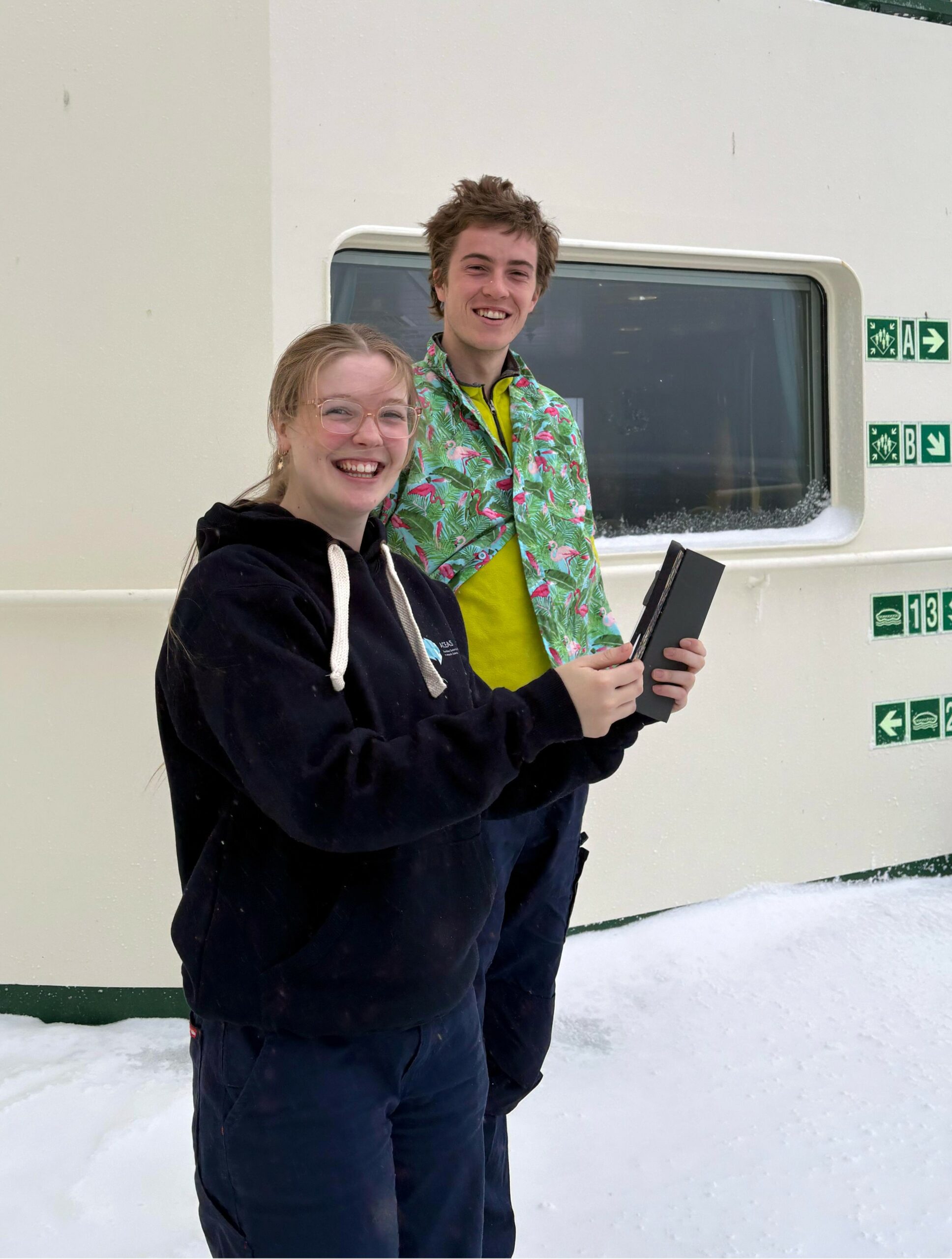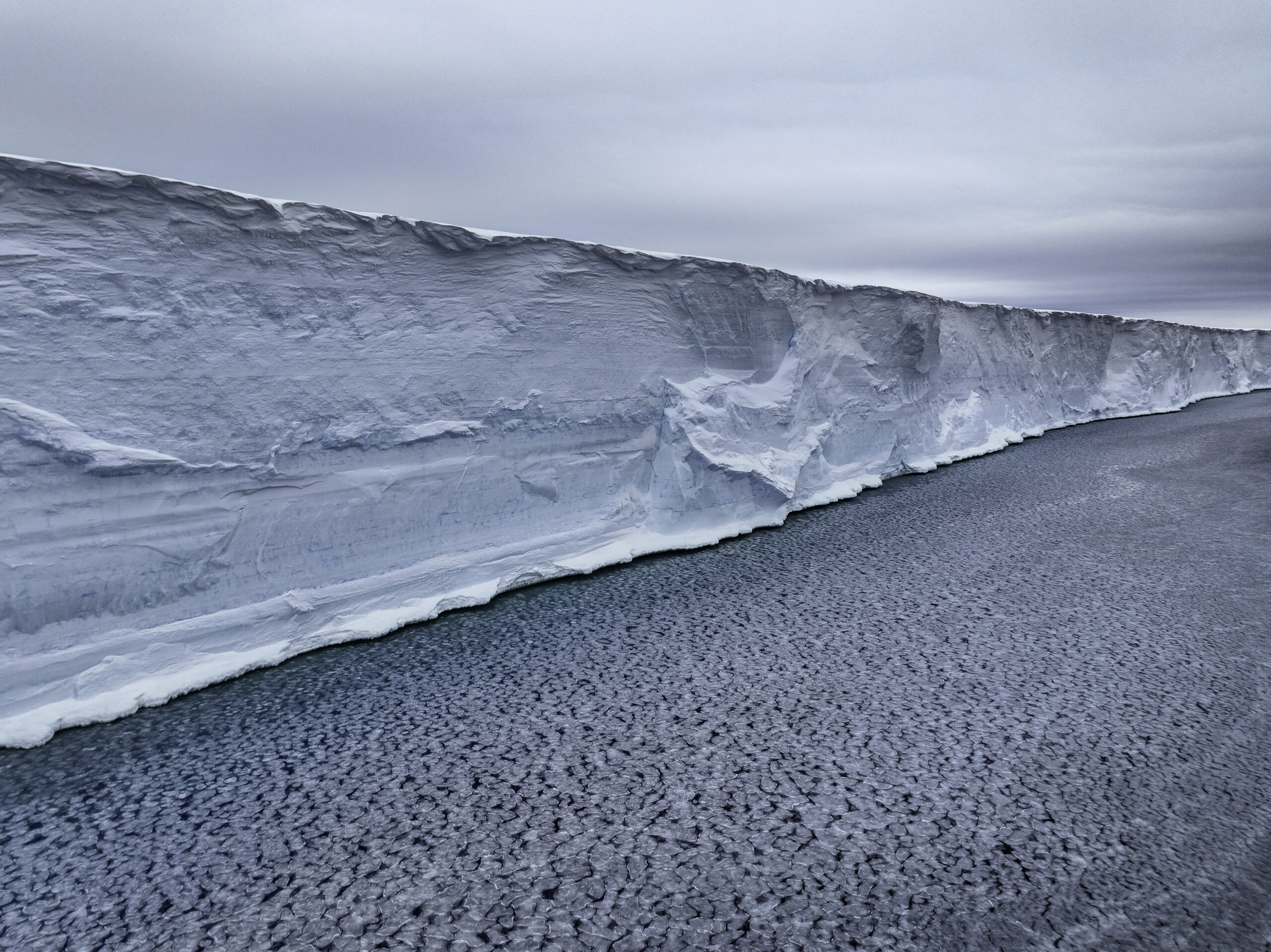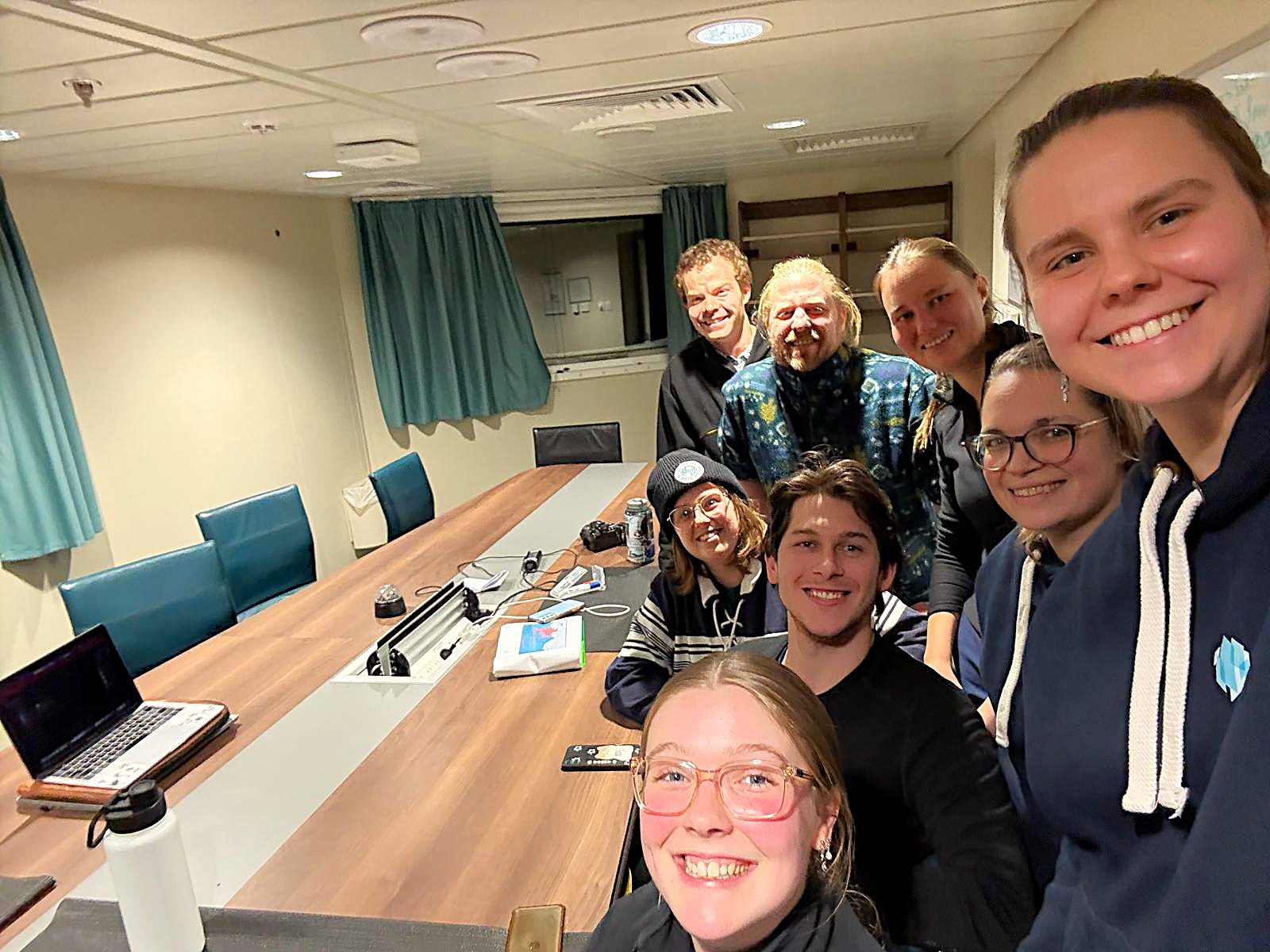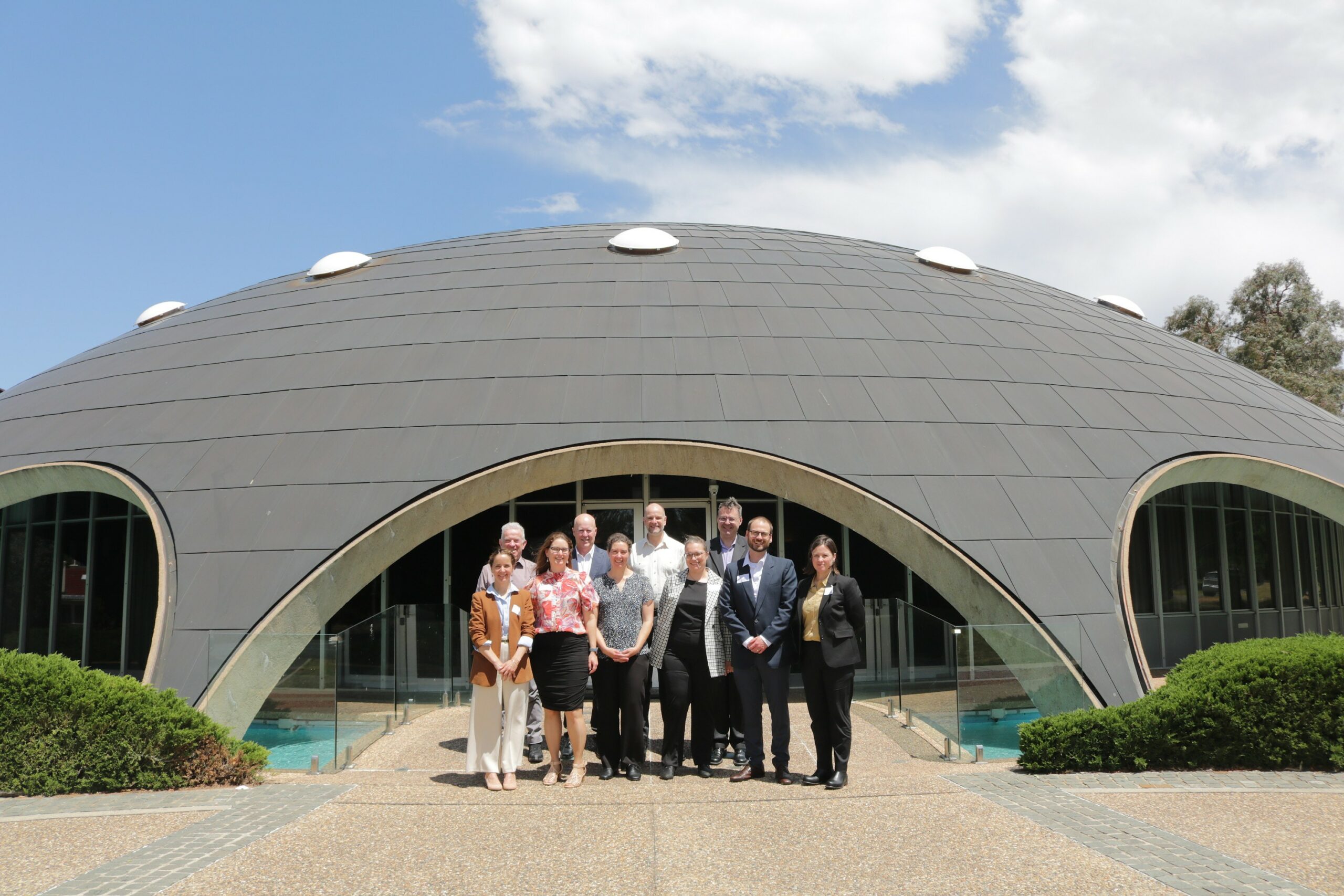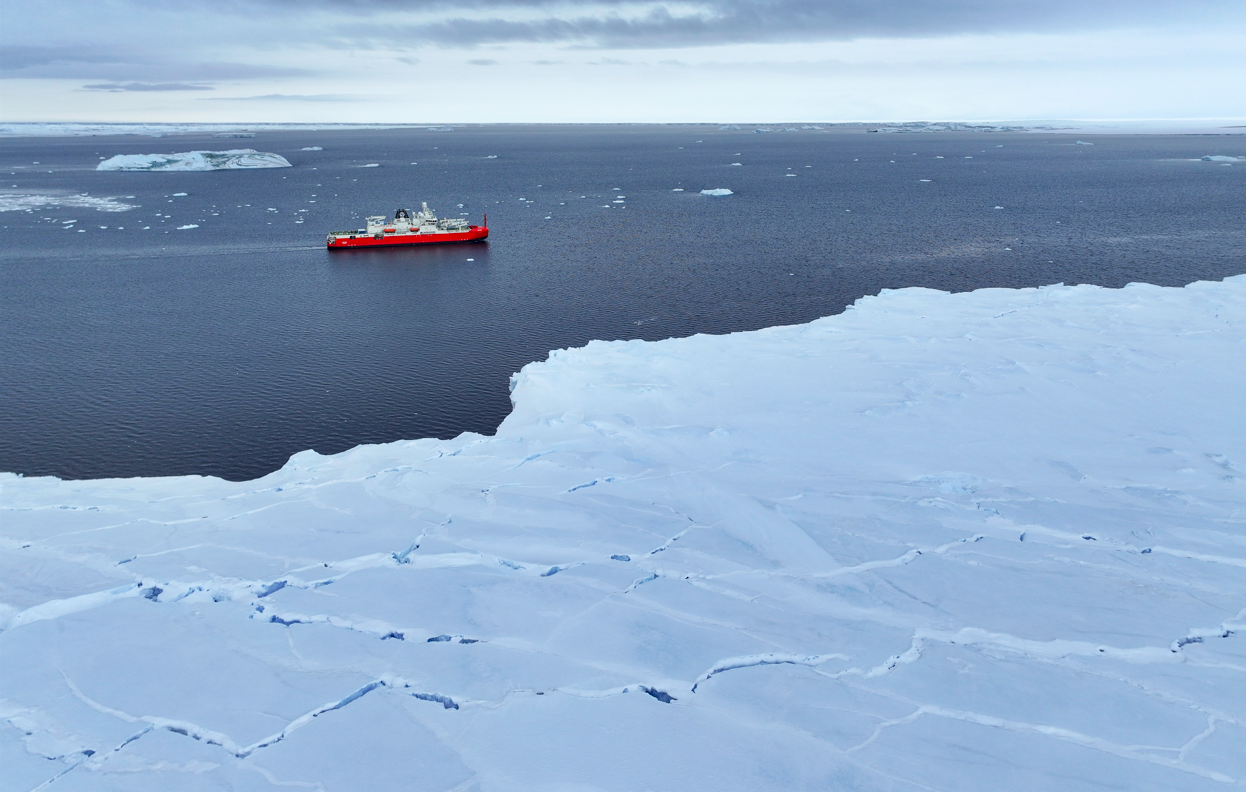From East Antarctica to the world: outreach program goes global
A young, talented and diverse group of Antarctic researchers working in the field alongside some of the sector’s research veterans was a hallmark of the Denman Marine Voyage (DMV).
The two month-long voyage to the largely unexplored Denman Glacier and Shackleton Ice Shelf region of East Antarctica presented unprecedented scientific opportunities, to gather data and learn more about the Denman system, and how and why it is changing.
It also presented another golden opportunity – a chance to reach out and share the science with students as it was happening, through an organised outreach program.
As it would turn out, the program went on to include students of all ages and from around the world – even, in different languages.
Outreach Coordinator Neve Clippingdale (IMAS/UTAS) led the outreach program, which was made possible through an ACEAS legacy grant.
“Science can often be perceived as intimidating and confusing to people not directly involved, so outreach is incredibly important to break down barriers and allow people the opportunity to see with their own eyes what happens when working in the field,” she said.
“It is even more important to speak to young people who might one day work in the marine sector, so they know what exciting opportunities there are.”
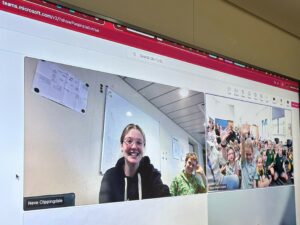
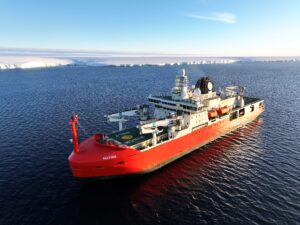
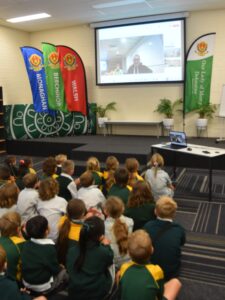
—
Building community, giving back
Through a series of video calls, small groups of scientists on board RSV Nuyina were able to take students back in classrooms in Tasmania, New South Wales, Germany and the United States on virtual guided tours through the icebreaker, its laboratories, equipment and living areas and outside to the deck and surrounding Antarctic views.
The calls gave the students an inside glimpse of life on Nuyina and access to the science on board, with project insights on trace metals to sediment coring, benthic ecology and phytoplankton, to physical oceanography, bathymetry, rock dredging, seal tagging and glaciology.
The first call was to Neve’s own primary school – Our Lady of Mercy Catholic School in Deloraine – an experience she said was “incredibly special.”
“The thing I enjoy most about delivering the outreach sessions is the excitement and enthusiasm the students show when they see something really cool – like all the snow and ice when we took them outside on the tour,” she said.
“It really made us feel as though we were doing something worthwhile. I couldn’t believe how involved all the students were! It was remarkable when we got to question time, half the students raised their hand.”
“The students were super interested in what we were showing them and very involved when I had questions for them too. Our Lady of Mercy gave me so much and will always have a special place in my heart, so I am so grateful for the opportunity give something back!”
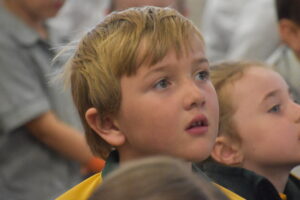
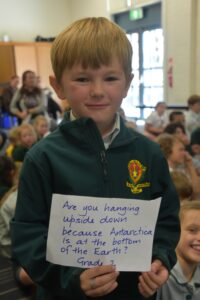

—
Connection through science
As with Neve, a number of calls to schools were facilitated through personal connections, such as those of Senior Scientist and seafloor team member Dr Katharina Hochmuth (IMAS/UTAS).
One call to Weston High School in Massachusetts, United States came about because Dr Hochmuth had sailed with one of its science teachers in the North Atlantic Ocean two years ago – and another – to a much younger cohort of students at Kinderhouse Daycare in Munich – was delivered entirely in German.
“I love showing off everyone else’s work and see how excited everyone gets to talk about their life on board and their science,” said Dr Hochmuth.
“If it is a parent speaking to their kid’s class or some international scientist sharing their experience with students in their home country, the enthusiasm for our work here is amazing and comes back from the students on the other side of the screen. We always ran out of time and never out of questions from the audience.”
Calls to the former schools of researchers Christina Schmidt (hydrochemistry team) in northern Germany, Jim Trihey (sediment coring team) in the Blue Mountains outside Sydney and to Mount Nelson Primary School in Hobart, where Prof. Jo Whittaker (rock dredging lead) is a parent, also featured.
Scientists from voyage partners AAPP, SAEF and AAD also collaborated to share their research and enthusiasm.
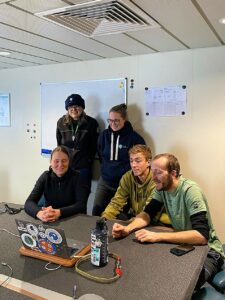
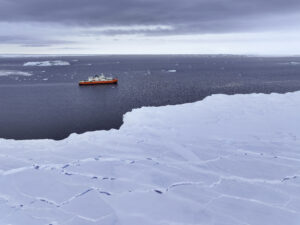
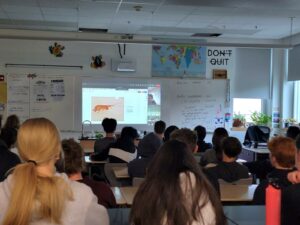
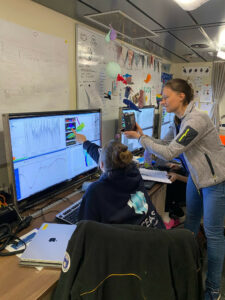
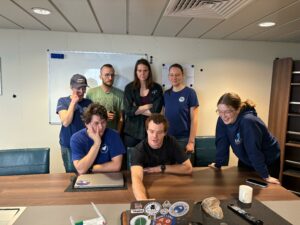
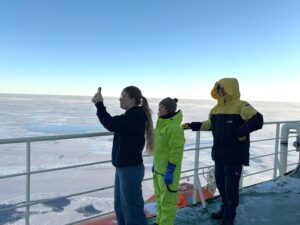
—
Sharing the wonder
For those forging new connections through the screens, it was also the simple things.
‘The ice cream fridge!” said Dr Hochmuth.
“I really enjoy the students seeing things from everyday life in a marine setting, because it makes our voyage more relatable. Wildlife is another big thing they have a lot of questions about, and I love sharing all my penguin encounters.”
ACEAS Science Coordinator on the voyage Professor Delphine Lannuzel (IMAS/UTAS, now AAPP) said it was “truly amazing” to see the way DMV researchers inspired young students.
“The ACEAS science team was extremely busy onboard, but somehow managed to find the time and energy to reach out to classrooms around the world, relaying their passion and enthusiasm for polar science,” she said.
For Neve, the dedication to science communication is lifelong.
“There is just nothing better than being able to share your enthusiasm for something and seeing someone else become equally excited about it!” she said.
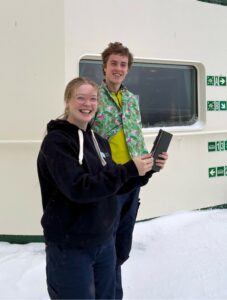
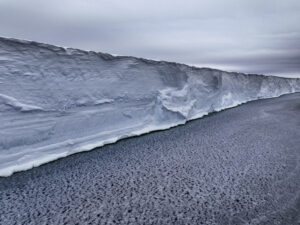
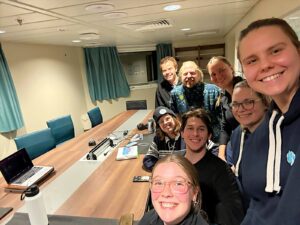
—
*The Denman Marine Voyage returned to Hobart on Friday 2 May, 2025 and more ACEAS outreach is planned with schools.
The DMV was and will continue to be a science collaboration between ACEAS, the Australian Antarctic Program Partnership (AAPP), Securing Antarctica’s Environmental Future (SAEF) and the Australian Antarctic Division (AAD).
